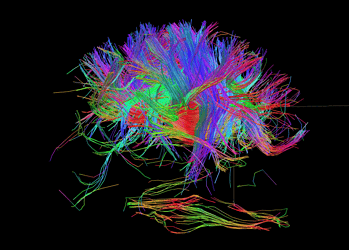A new study in eLife reveals a surprising twist in infant attention research. By 12 months old, infants do not simply respond to caregivers: they often drive attention themselves, using brain-based rhythms. Caregivers are responsive, but not in control of the interaction. This study challenges the belief that adults guide early attention and shows that infants have much more initiative than we thought

Researchers at the University of Cambridge observed 66 infants during natural play with a caregiver. They tracked each baby’s brain activity using EEG and recorded their gaze. They also monitored caregiver speech and eye movements in real-time. This approach let them analyze every shift in attention, second by second.
The study found infants shifted their gaze every 1–2 seconds. Their attention followed a slow and regular rhythm, unlike the fast-paced rhythms seen in adults. But infant and caregiver rhythms were not synchronized. Each kept their own internal pace. This means shared attention isn’t about matching rhythms. It’s about one partner (usually the infant) leading while the other reacts. The idea that babies only respond to adults doesn’t hold up under this kind of analysis.
Brain Waves Predict Infant Attention
The researchers focused on one key brain signal in infants: theta rhythms. These are slow waves seen in the front of the brain, often linked to learning and attention. They found that infants with stronger theta activity were more likely to stay focused on a toy. These rhythms seemed to support attention, helping the baby stay engaged for longer.
However, theta rhythms did not rise before a look began. That means the rhythm helped sustain attention, not start it. Infants who had higher average theta power tended to look at objects longer overall, which suggests that attention is not just reactive but rather, it’s supported by internal processes. Infants were not waiting for a cue to look. They were already tuned in, using their own neural timing. This is important because it shows babies play an active role in their own learning.
Caregivers, meanwhile, did not predict these looks with their behavior. Their gaze and voice patterns changed after the infant was already looking. That suggests they were responding, not directing. This finding shifts how we think about early learning. Infants are not empty vessels waiting for input, they guide their own attention. Essentially, they’re actively shaping each moment of interaction.
Caregivers React, but Do Not Guide
The second part of the study looked at how caregivers behaved. Would their gaze or speech predict the baby’s next move? The answer was a pretty clear ‘no’. Caregivers did not lead infant attention. Instead, they adjusted once the baby had already made a choice.
After a baby looked at a toy, caregivers often looked there too. They also changed the pitch of their voice.
But these changes happened after the infant shifted focus, confirming once again that the infant was driving the interaction. This shows adults are highly responsive—but they follow the baby’s lead.
The most responsive caregivers were the ones who allowed the infant to set the pace. Longer infant looks were linked to greater pitch changes from caregivers. This may help the baby stay engaged, reinforcing their internal focus. These results suggest attention is not forced from the outside. Instead, it’s a kind of interactive dance—and the infant often leads.
Ultimately, this study shows that infants are active players in attention and learning. And that infants guide their own attention. By one year of age, they can guide interactions using internal brain rhythms. Caregivers are important, but mostly as responders, not leaders. Their behavior supports and extends infant focus, rather than initiating it.
This work helps shift the view of early development. Infants are not passive. They are already building control over attention. Future research may explore how this process shapes learning over time. For now, the message is clear: sometimes the youngest minds are the ones in charge.






